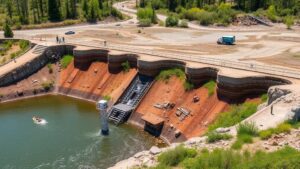Decoding Star Alignments on Maps That Lead to Hidden Vaults
Decoding Star Alignments on Maps That Lead to Hidden Vaults
Star alignments have been a source of intrigue for treasure hunters, historians, and astronomers alike. Through the ages, maps featuring hidden vaults have often contained references to celestial bodies, shrouding them in a mystical aura. This article aims to decode the intricacies of star alignments on maps, specifically those leading to purported hidden vaults, examining historical contexts, methodologies, and modern interpretations.
The Historical Context of Celestial Navigation
Celestial navigation, the practice of using the stars to determine one’s position on Earth, dates back thousands of years. Ancient civilizations, including the Egyptians, Greeks, and Polynesians, relied heavily on the stars for orientation during land and sea voyages. For example, the ancient Egyptians used the constellation Orion to align their pyramids. Similarly, Polynesian navigators utilized the stars above the horizon to chart their courses across the Pacific Ocean.
In the context of treasure maps, many historical accounts suggest that hidden vaults–often containing riches or sacred artifacts–were located based on star alignments. treasure of the Knights Templar, rumored to be hidden in locations corresponding to specific celestial bodies, is one of the more famous tales that intertwine star alignments with hidden riches.
Understanding Star Alignments
Star alignments refer to the positioning of celestial bodies–stars, planets, and even constellations–in relation to earthly landmarks. These alignments are significant in several respects:
- Geographical Orientation: Alignments can point to key landmarks or geographical features.
- Temporal Significance: These can indicate the timing of significant events based on celestial occurrences.
- Symbolic Interpretation: Celestial bodies often have cultural significance that can guide interpretation.
For example, the use of Polaris, the North Star, as a fixed point aids navigators in orienting themselves. When applied in the context of treasure maps, identifying key stars in conjunction with specific geographic locations can illustrate a clearer path towards hidden vaults.
Interpreting Maps with Star Alignments
To decode maps that feature star alignments, one must take a systematic approach, integrating astronomy, cartography, and historical context. following steps outline an effective method for interpretation:
- Identify Celestial Bodies: Begin by recognizing which stars or constellations are referenced on the map. Consider their positions in relation to the geographic coordinates.
- Consult Historical Records: Research historical documents or texts referring to the same stars or celestial events. This can provide insight into their significance in treasure-hunting lore.
- Cross-Reference Landmarks: Identify any key landmarks on the map that align with the celestial bodies, forming a triangulation of sorts to pinpoint potential vault locations.
For example, a map depicting a hidden vault could reference the constellation Ursa Major, which, when aligned with specific mountain ranges, may suggest a location between two valleys. Historical instances of treasure hunters unraveling clues based on celestial alignments demonstrate the effectiveness of this methodology.
Case Studies: Successful Deciphering of Maps
Several noteworthy cases illustrate the practical application of decoding star alignments:
- The Oak Island Mystery: For centuries, treasure hunters have flocked to Oak Island, where a mysterious map and various celestial alignments suggest the presence of an undisclosed vault. Explorations linking the position of certain trees to specific stars have resulted in numerous discoveries, although the treasure remains elusive.
- Knights Templar and the Rosslyn Chapel: The architecture of Rosslyn Chapel in Scotland incorporates astronomical alignments that reputedly reference the location of Templar treasure. Researchers continue to explore relationships between star positions and the chapel’s intricate designs–feeding into the lore of hidden riches beneath its foundation.
Modern Technologies and Techniques
Recent advancements in technology have significantly enhanced the ability to decipher star alignments on maps. Tools such as Geographic Information Systems (GIS) and computer modeling allow for more precise mapping of celestial alignments against earthly landmarks. Drones equipped with GPS can help treasure hunters explore regions that traditional methods may overlook.
Plus, software that projects star positions over time enables explorers to simulate various historical periods, offering insights into the possible orientations of celestial bodies that ancient map-makers utilized. This increases the likelihood of successfully locating hidden vaults based on historical star alignments.
Conclusion
The intersection of celestial navigation and treasure hunting retains an enduring allure. Through understanding the historical context, interpreting star alignments, and applying modern technologies, the quest for hidden vaults becomes not just a pursuit of material wealth but also an exploration of human history, astronomy, and cultural significance. As treasure hunters continue their endeavors, decoding maps with star alignments serves as a bridge connecting the past with future discoveries.
Actionable Takeaways
- Enhance knowledge of celestial navigation and its historical significance.
- Familiarize oneself with the tools and software available for mapping celestial alignments.
- Engage in collaborative research, exploring both historical texts and technical studies related to star alignments and treasure lore.


